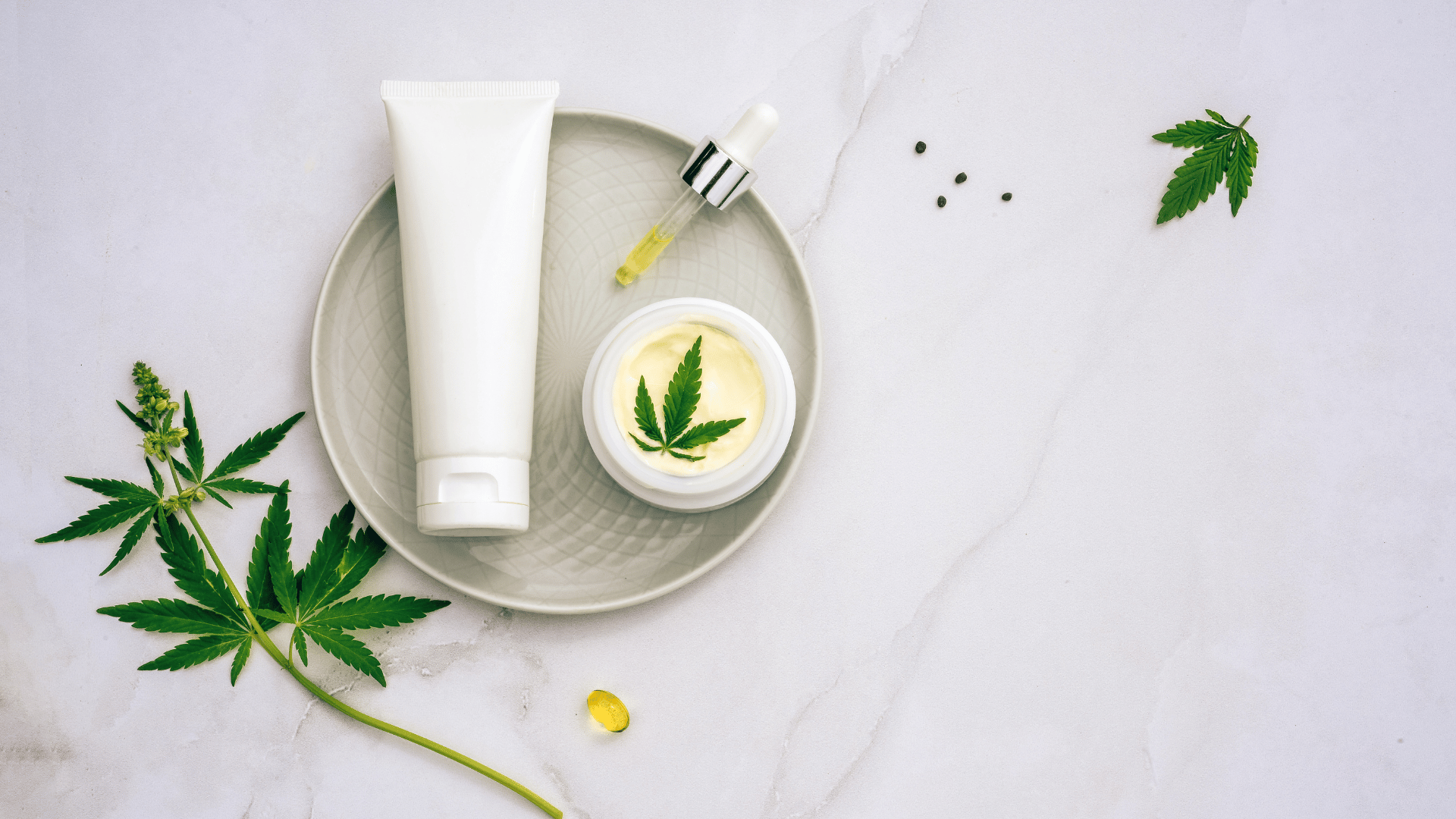Incorporating cannabinoids into topical formulations is an exciting development in the cosmetics industry. Cannabidiol (CBD), a non-psychoactive compound derived from the cannabis plant, has gained attention for its potential anti-inflammatory, antioxidant, and soothing properties. For cosmetic chemists, learning how to incorporate cannabinoids effectively and safely into products opens up new opportunities for innovation and market growth.
The skin contains its own endocannabinoid system (ECS), which includes cannabinoid receptors (CB1 and CB2), endocannabinoids, and enzymes. This system helps regulate various skin processes, including cell growth and death, lipid production, and immune responses. By interacting with this system, CBD may offer several skin benefits. It has the potential to reduce inflammation by blocking pro-inflammatory chemicals, making it useful for conditions such as acne or eczema. Additionally, CBD’s antioxidant properties may protect skin cells from damage caused by free radicals, while its ability to regulate sebum production could help reduce excess oil on the skin.
Before diving into formulation, it is important to navigate the regulatory landscape surrounding cannabinoids. The legal status of CBD varies depending on the region, so it’s essential to ensure compliance with local laws. In many places, CBD derived from hemp (with less than 0.3% THC) is legal for cosmetic use, but formulators must ensure that their CBD meets these regulations. Working with suppliers who provide certificates of analysis (COAs) is crucial to verify the cannabinoid profile and ensure there are no contaminants. When marketing cannabinoid-infused products, it’s important to avoid making medical claims and instead focus on the general skin benefits CBD can offer.
Choosing the right form of CBD for a formulation is essential for achieving efficacy and stability. There are three main types of CBD: full-spectrum, broad-spectrum, and CBD isolate. Full-spectrum CBD contains all cannabinoids, terpenes, and flavonoids from the hemp plant, including trace amounts of THC. Broad-spectrum CBD is similar but without THC. CBD isolate is pure cannabidiol, with no other plant compounds. Full-spectrum and broad-spectrum CBD may offer enhanced benefits due to the synergistic effects between compounds, but they can also introduce challenges related to odor, color, and stability. CBD isolate, on the other hand, offers greater stability and is easier to work with in formulations that require a more neutral aesthetic. It’s a colorless odorless solid, not a brown oil that smells strongly of cannabis.
Formulating with cannabinoids presents some unique challenges, particularly around solubility, stability, and bioavailability. CBD is lipophilic, meaning it dissolves in oils rather than water. This makes it well-suited for oil-based formulations like balms and ointments. In water-based products, formulators can use emulsions, such as oil-in-water or water-in-oil systems, to incorporate both oil and water components. Solubilizing agents like polysorbates or cyclodextrins can help CBD disperse in aqueous formulations.
Stability is another key concern, as CBD is sensitive to light, heat, and oxygen. To protect it from degradation, formulators can add antioxidants like vitamin E or rosemary oleoresin and use airless pumps or opaque containers to minimize exposure to light and air. Keeping the formulation’s pH in a range that doesn’t promote CBD degradation (typically between pH 5 and 7) is also important.
Bioavailability, or how well CBD is absorbed into the skin, is a final consideration. To enhance absorption, formulators can use penetration enhancers like ethoxydiglycol or incorporate liposomes to deliver CBD more effectively. Nanoemulsion technology, which reduces particle size, can also increase the surface area and absorption rates of CBD. Additionally, some terpenes present in hemp oil may naturally act as penetration enhancers, further supporting the efficacy of CBD in topical formulations.
There are several ways to formulate cannabinoid-infused products, depending on the desired application. For example, a CBD-infused face cream might include CBD isolate dissolved in jojoba oil, along with emollients, emulsifiers, humectants like glycerin or hyaluronic acid, and antioxidants like vitamin E. The oil phase and aqueous phase are heated separately, emulsified together, and then cooled while adding heat-sensitive ingredients. Adjustments to pH and viscosity are made as needed. Alternatively, a CBD topical balm might be made with full-spectrum CBD oil, beeswax, shea butter, coconut oil, and antioxidants like rosemary oleoresin. The ingredients are melted together, CBD is incorporated, and the mixture is poured into containers to solidify.
Ensuring the quality and safety of cannabinoid-infused products is paramount. Products should undergo microbial testing to confirm they are free of contaminants, and cannabinoid content should be verified using methods like HPLC or GC-MS to ensure accurate dosing. Stability testing helps assess the shelf life of the product, and dermatological patch testing can evaluate skin compatibility.
Educating consumers about the benefits of CBD and providing clear, transparent information about the product’s source and concentration can build trust and enhance market acceptance. However, it’s important to avoid overpromising in marketing and to stick to evidence-based claims. Detailed usage instructions can help consumers get the most out of the product.
Looking ahead, several trends are shaping the future of cannabinoid-infused cosmetics. Other non-psychoactive cannabinoids, such as cannabigerol (CBG) or cannabinol (CBN), are gaining interest for their unique properties. Advances in nanotechnology are making water-soluble CBD more accessible, broadening the range of potential formulations. Sustainability is also becoming a key focus, with an emphasis on eco-friendly practices like sourcing organic hemp and using biodegradable packaging.
Incorporating cannabinoids into topical formulations offers cosmetic chemists a chance to innovate and tap into growing consumer interest. By understanding the science behind CBD, navigating regulatory requirements, and overcoming formulation challenges, it’s possible to create effective, appealing cannabinoid-infused products. Continuous learning and adaptability will be essential as the market for cannabinoid-infused cosmetics continues to evolve, but with the right approach, formulators can seize this opportunity and succeed!

